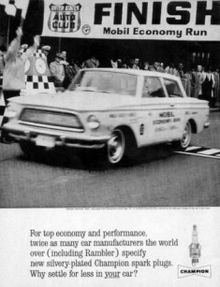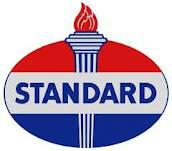Hi Richard,
This is one of the best year by Year histories of the roll out and roll up of the Standard Oil company that I have ever seen...
and I have seen quite a few. !!!.
I was trying to access the link that is at the bottom of your post and it's no longer active....
I was hunting around for the website you might have accessed.... did not locate it but came up with this.
( I have to correct the info in this below link... Standard Oil of New Jersey was the largest gemstone in the broken up Stand Oil empire.... probably as NJ had the 1882 law that allowed corporations to own stock
in other companies.. Standard Oil of New Jersey.... changed it's name to Esso for a few years in the 1960's and very early 1970's before changing it's name to EXXON.
Standard Oil of New York ... went on to become Mobil.
* 1882: Standard Oil Company of New Jersey ("Standard") was formed to take advantage of New Jersey laws that allowed corporations to own stock in other corporations. It provided adminstrative co-ordination to the Trust. Standard Oil Company of New York also formed this year, and administered most of the foreign territories. The West India Oil Company formed to handle refining in Cuba & the Caribbean.
Following the break-up of Standard Oil in 1911, the Standard Oil Company of New York, or Socony, was founded, along with 33 other successor companies. In 1920, the company registered the name "Mobiloil" as a trademark.

Socony-Vacuum petrol station in the Dutch East Indies
Henry Clay Folger was head of the company until 1923, when he was succeeded by Herbert L. Pratt. Beginning February 29, 1928 on NBC, Socony Oil reached radio listeners with a comedy program, Soconyland Sketches, scripted by William Ford Manley and featuring Arthur Allen and Parker Fennelly as rural New Englanders. Socony continued to sponsor the show when it moved to CBS in 1934. In 1935, it became the Socony Sketchbook, with Christopher Morley and the Johnny Green orchestra.
In 1931, Socony merged with Vacuum Oil to form Socony-Vacuum. [5]
In 1933, Socony-Vacuum and Jersey Standard (which had oil production and refineries in Indonesia) merged their interests in the Far East into a 50–50 joint venture. Standard-Vacuum Oil Co., or "Stanvac," operated in 50 countries, including New Zealand, China, and the region of East Africa, before it was dissolved in 1962.n 1935, Socony Vacuum Oil opened the huge Mammoth Oil Port on Staten Island which had a capacity of handling a quarter of a billion gallons of petroleum products a year and could transship oil from ocean-going tankers and river barges [6]

The Mobil Economy Run generated publicity and promotions such as this 1962 advertisement by Champion spark plugs with a Rambler American.
In 1955, Socony-Vacuum was renamed Socony Mobil Oil Company. In 1963, it changed its trade name from "Mobilgas" to simply "Mobil", introducing a new logo (created by New York graphic design firm Chermayeff & Geismar). To celebrate its 100th anniversary in 1966, "Socony" was dropped from the corporate name.
From 1936 to 1968, Mobil sponsored an economy run each year (except during World War II) in which domestic automobiles of various manufacturers in several price and size classes were driven by light-footed drivers on cross-country runs. The Economy Run originated with the Gilmore Oil Company of California in 1936 (which was purchased by Socony-Vacuum in 1940) and later became the Mobilgas Economy Run, and still later the Mobil Economy Run. The cars driven in the economy run were fueled with Mobil gasoline, and Mobiloil and lubricants were also used. The vehicles in each class that achieved the highest fuel economy numbers were awarded the coveted title as the Mobilgas Economy Run winner
http://https://www.logaster.com/blog/exxonmobil-logo/.
Founded in 1870 by the famous John D. Rockefeller as Standard Oil, the company ExxonMobil has overcome many challenges such as being broken up by the U.S. government. Now, however, in 2012 ExxonMobil has become the #1 company on the esteemed Fortune 500 list, with profits in the billions. With stations across the world and a customer base of millions, ExxonMobil shows no signs of slowing down anytime soon.
One factor that has helped ExxonMobil to be so successful is the distinctiveness of their logo. The bright and cheerful letters of the logo can be seen on stations around the world and that kind of brand recognition is vital for the growth of any company. With this recognition when someone needs to fill up a gas tank, ExxonMobil may very well be the first company they think of. Ever since its inception ExxonMobil has been a star member of the Fortune 500 and is sure to continue to be so for many years to come. Anyone who is interested in a branding empire of their own should consider the lessons and history of ExxonMobil.

First Logo-Standard OilBefore the creation of ExxonMobil, there was the Standard Oil Company. This company, founded by Rockefeller, soon became one of the most powerful companies in the United States. The colors of this logo are red, white and blue. These colors, the three colors of the U.S. flag, served to show Standard Oil’s patriotism. The large torch in the middle served a dual role. A torch requires fuel to burn, and the makers of the logo sought to point out that American needed fuel to thrive and grow. The torch also served as a symbol of lighting the path to the future, which would require fuel as well.
 2nd logo-Exxon and Mobil 2nd logo-Exxon and Mobil  In the 1930’s Standard Oil was actually broke up into many different companies under the U.S’s anti-trust laws. Exxon and Mobil were two of these companies and these two companies used two separate logos as well. Mobil used a distinctive logo of their name next to a Pegasus in flight. This image served to represent their dedication to travel. Exxon’s logo, though much less stylized, served its purpose. The two X’s in Exxon were crossed so as to symbolize their reliability. In the 1930’s Standard Oil was actually broke up into many different companies under the U.S’s anti-trust laws. Exxon and Mobil were two of these companies and these two companies used two separate logos as well. Mobil used a distinctive logo of their name next to a Pegasus in flight. This image served to represent their dedication to travel. Exxon’s logo, though much less stylized, served its purpose. The two X’s in Exxon were crossed so as to symbolize their reliability.
Current Logo-Together at Last  In 1998, Exxon and Mobil merged to create ExxonMobil. These two companies together created the world’s largest oil company and it soon rocketed to the top of the Fortune 500 list. The logo that this new company settled on was quite simple. They kept the crossed X’s of the Exxon logo, as well as its color scheme, and added Mobil to the side in the same font and color. In 1998, Exxon and Mobil merged to create ExxonMobil. These two companies together created the world’s largest oil company and it soon rocketed to the top of the Fortune 500 list. The logo that this new company settled on was quite simple. They kept the crossed X’s of the Exxon logo, as well as its color scheme, and added Mobil to the side in the same font and color.
Why the Logo WorksAs the number one company on the prestigious Fortune 500 list, there can be no doubt that the logo of ExxonMobil is effective. The logo stands for two companies that, even broken up by the government, never gave up. These companies persevered, merged and became one of the most powerful companies in the world. |




